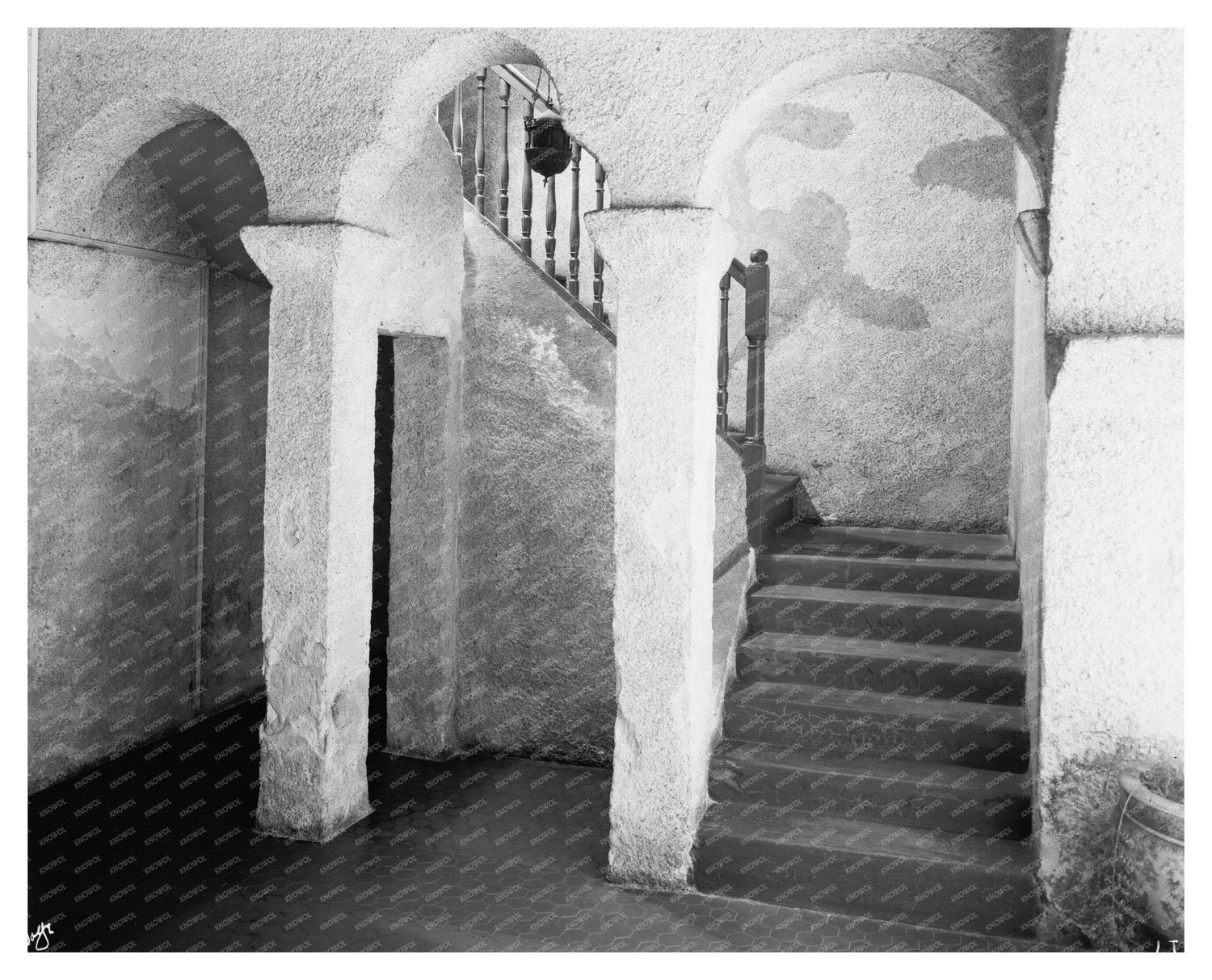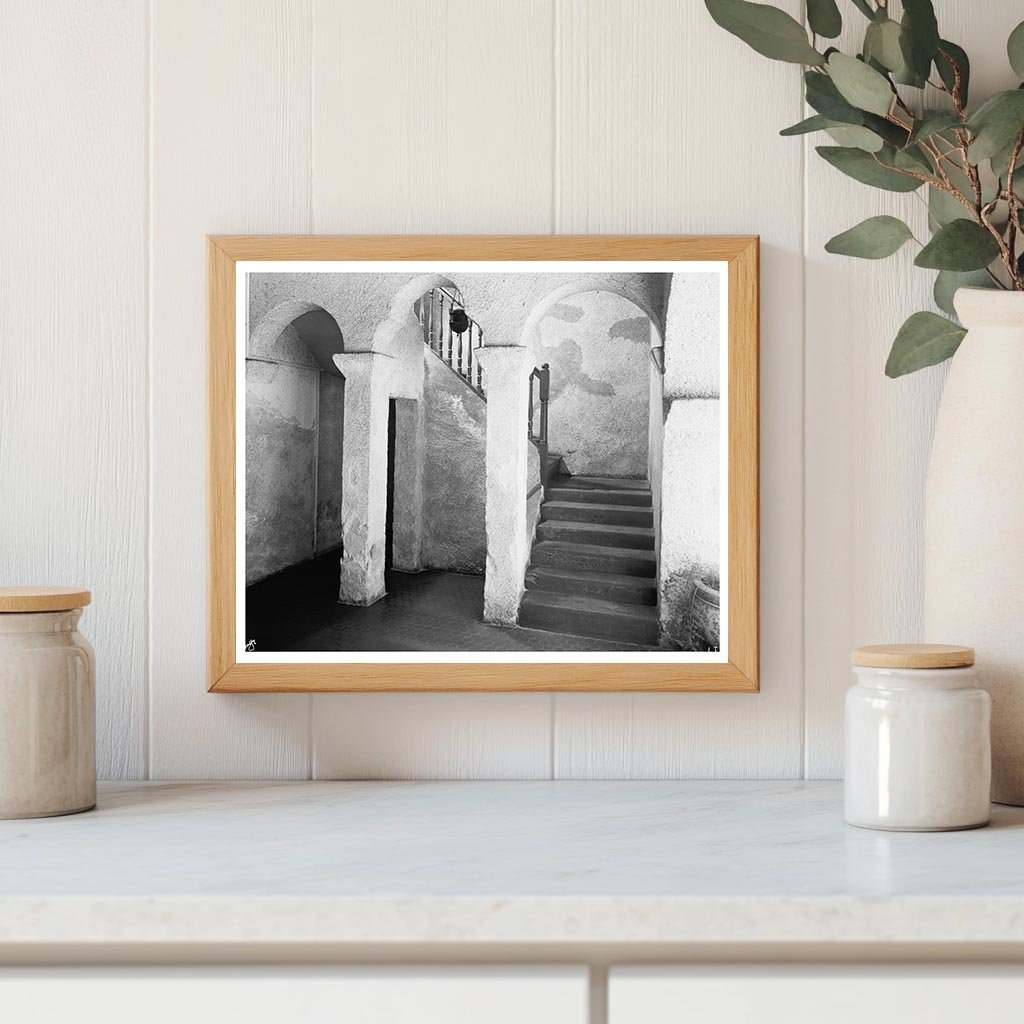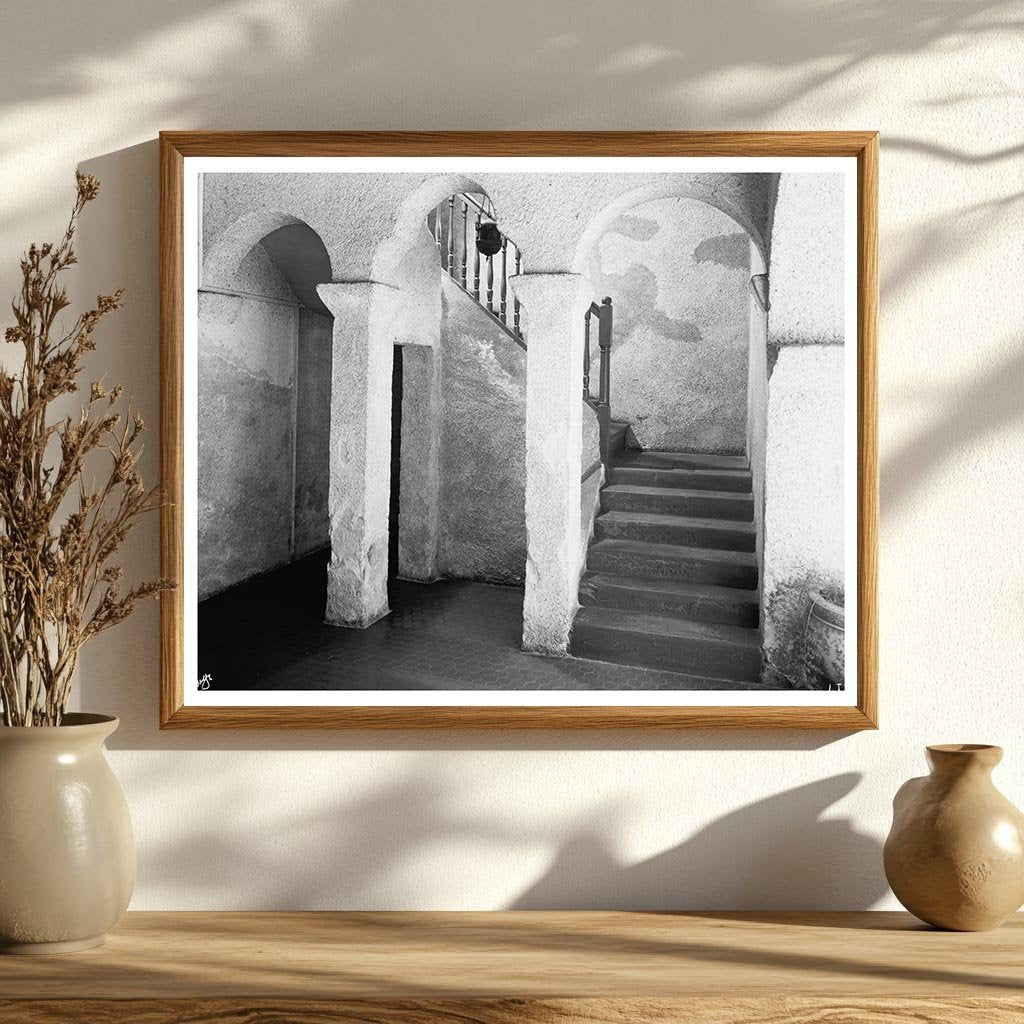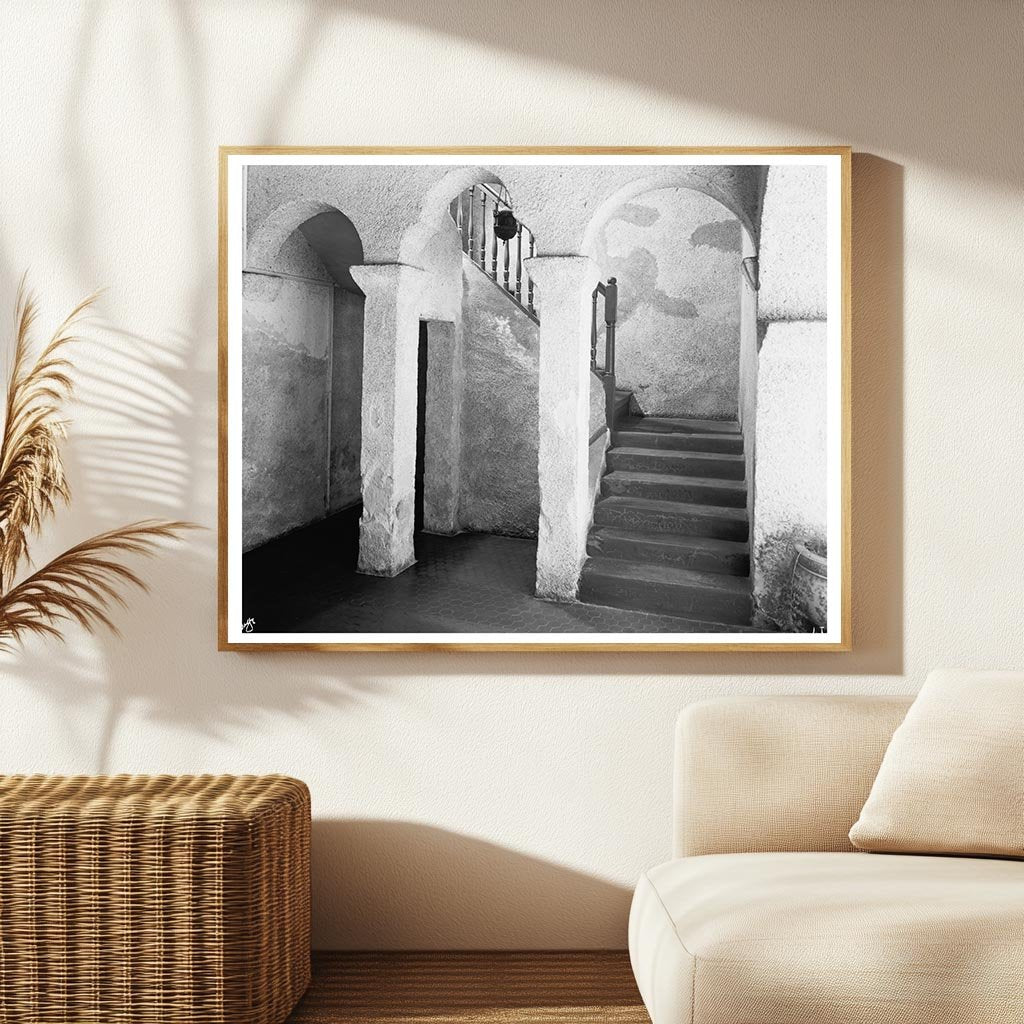



Horruytiner House, St. Augustine, Florida, 1953
This vintage photograph showcases the Horruytiner House, located in St. Augustine, Florida. Renowned for its historical significance, St. Augustine is the oldest continuously inhabited European-established settlement in the continental United States. The house exemplifies the regions unique architectural heritage, featuring distinct stone construction that reflects the craftsmanship of its era.
Captured by Frances Benjamin Johnston, the image is part of the Carnegie Survey of the Architecture of the South, which aimed to document significant architectural landmarks across the southern United States. The photograph serves as a valuable resource for understanding the architectural styles prevalent during the period.
The image is linked to the Carnegie Survey, overseen by the Library of Congress and represents a critical documentation effort of early 20th-century architecture. It was acquired from the estate of Frances Benjamin Johnston in 1953, ensuring the preservation of this important piece of Floridas history.

Horruytiner House, St. Augustine, Florida, 1953
